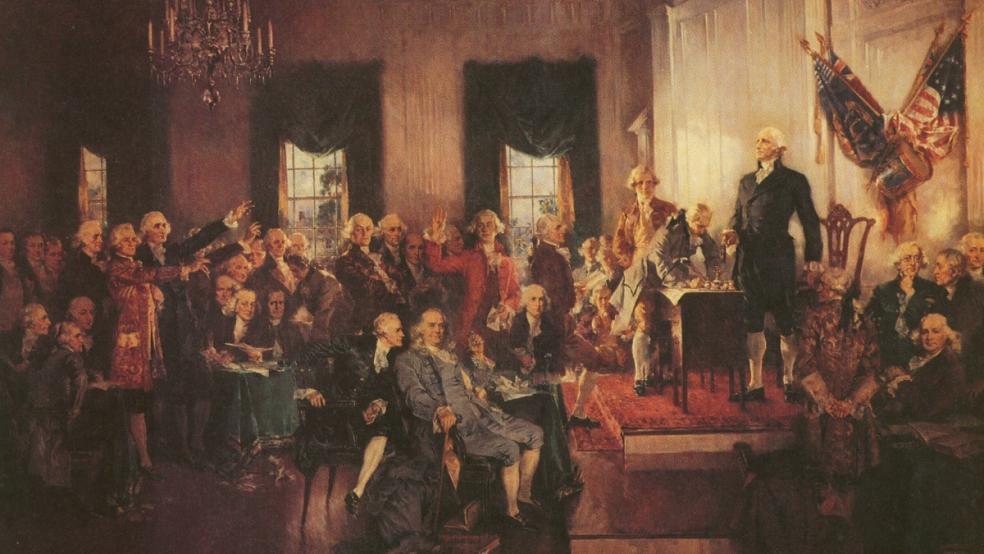When members of the right-wing House Freedom Caucus meet in private, they typically discuss ways to thwart or topple their more moderate House Republican leaders or alter the rules to give rank and file members more legislative clout.
Not so for the House Chicken Caucus, which was formed this year by two lawmakers, a Democrat and a Republican, from poultry regions in California and Arkansas. Members of the caucus view their mandate as educating their colleagues and the public “about the history, contributions and issues of importance to U.S. chicken producers.”
SLIDESHOW: From Babies to Bourbon: 33 Surprising Congressional Caucuses
While just a few high profile factions within the 435-member House get much attention these days — most notably the roughly 40-member Freedom Caucus as well as the Congressional Black Caucus and the Congressional Hispanic Caucus — a myriad of other mostly obscure cliques are focused on pet policies and issues important to their constituents back home.
Those issues range from Irish affairs, cement production, cut flowers and shellfish to “financial and economic literacy,” hockey, songwriters and rock ‘n’ roll. There are caucuses for rodeos and toys, submarines and small brewers, motorcycles and sugar — and admirers of Ronald Reagan. There are groups built around regional or national issues — from the Hong Kong Caucus to the Albanian Issues Group to the Friends of Liechtenstein — and ones devoted to almost every major disease or meOR: dical disorder, from blood cancers to malaria to arthritis.
Rep. John Yarmuth (D-KY), a founding member of the House Bourbon Caucus, is ever ready to sing the praises of Kentucky’s Jim Beam and Early Times bourbon whiskey and promote the distillery industry. Reps. Mike Thompson (D-CA) and Dan Benishek (R-MI) of the Invasive Species Caucus are beating the drum to raise awareness of the dangers of the Asian Carp and other alien fish that are invading the nation’s lakes and streams.
And a small but growing cluster of House members are sounding the alarm about what they see as a very real doomsday threat: the “unleashing of an electromagnetic pulse,” either by a solar storm or a nuclear-armed enemy, that could paralyze or destroy U.S. electrical infrastructure.
“I realize there is skepticism, and I understand it’s easy to dismiss this as something coming from people who might go around wearing tinfoil hats,” Rep. Trent Franks (R-AZ), one of the leaders of the congressional Electromagnetic Pulse Caucus, said earlier this year in a statement.
Related: The Three Factions Tearing the Republican Party Apart
Back in 2013, Rep. Roger Williams (R-TX), a former professional baseball player, joined forces with Rep. Mike Doyle (D-PA) to create the bipartisan Congressional Baseball Caucus. “I can’t think of a better way to set aside our partisan differences than to get together once in a while and hear from baseball legends, discuss important issues about the game and simply enjoy each other’s company,” Williams said at the time.
In all, there are 410 caucuses currently registered with the House Committee on Administration. Few of them have any clout, although it should be added that any time more than a dozen lawmakers band to together on an issue or concern and write a letter, they can often generate some attention from Republican and Democratic leaders. There is always strength in numbers on Capitol Hill. And across the Capitol Building in the Senate, Republicans and Democrats engage in similar caucus activities.
The caucus phenomenon dates back to the late 1950s, when many rank and file House Democrats banded together to create the Democratic Study Group — a policy-oriented group of lawmakers and professional staff who provided detailed information to lawmakers and the news media on pending legislation. At that time, many of the Democratic leaders and committee chairs were autocratic and tended to keep a lot of information on bills close to their vests.
Related: With the House Divided, the Specter of a Year End Fiscal Disaster Looms
After Newt Gingrich and the Republicans took back control of the House in 1994 as part of the “Republican Revolution,” the Democratic Study Group was defunded and dismantled. The Congressional Black Caucus meanwhile created a separate foundation to help fund its continued research and advocacy activities.
In the years that followed, Republicans and Democrats informally banded together on issues of regional or national concern, according to Norman Ornstein, a congressional scholar with the American Enterprise Institute. “A lot of them were not terribly active as legislative drivers,” Ornstein said in an interview on Monday. “As much as anything it was to show people back home that they cared about them.”
“So you would have a wine caucus or a beer caucus, and in places where you had wineries or even distributors, that made you something,” Ornstein added. “If there was something coming up, they shared information that might affect their industry. But a lot of it was more social and position-taking than it was deeply active.”
Click here to see 33 of the most surprising congressional caucuses.





